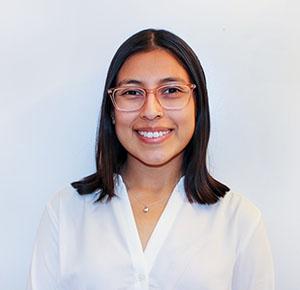
An example of Bazarsky's LiDAR work
Alex Bazarsky '23 loves discovering the unknown.
After completing her first anthropology courses at Brandeis, Alex Bazarsky ’23 knew she wanted to become an archaeologist. With the help of associate professor Charles Golden, she’s making her dreams a reality.
Bazarsky, a double major in anthropology and Latin American studies with a minor in art history, was introduced to Golden during her freshman year.
During her first archaeology course, Archaeological Methods with professor Lauren Santini, Bazarsky was diligent with her coursework and showed a true passion. Seeing her interest, Santini realized that Bazarsky would be a great candidate for archaeological research. When Golden’s upcoming research came to mind, Santini knew she had to connect the two.
Bazarsky’s passion clearly showed promise, as Golden selected her to join the team on their next big project - traveling to Mexico to research ancient Mayan civilizations.
The trip was scheduled for the summer 2020, but was cancelled because of the pandemic. However, that didn’t stop the team from making innovative discoveries. Findings were captured using drone and Lidar technology, an important developing remote sensing technology, giving the team of graduate students and professors the opportunity to analyze their research from home.
With the help of Golden, Bazarsky challenged herself to learn the program independently. In addition to reviewing material Golden sent, she did her own online research to find more resources on Lidar technology.
“The learning experience was very collaborative,” said Bazarsky. “I’m not very good with computers, so there was a definite learning curve. But we all worked together to learn as a team.”
Bazarsky looks back on the experience as being extremely rewarding. “Most people don’t learn these skills until graduate school,” said Bazarsky. “Professor Golden has given me an educational experience I couldn’t get anywhere else.”
The team worked on a weekly basis, studying the 20 mile area that was captured using drone technology. Each member would take a section to analyze, locating different structures and settlement patterns of the area. Bazarsky found herself digging deeper.
“I noticed one area had been less inhabited despite having a suitable area for civilization,” she said. “This sparked my curiosity. Why wasn’t anyone living there?”
After sharing her findings with Golden, he assigned her the task of exploring the location as an individual research project.
“Professor Golden challenged me,” said Bazarsky. “He wanted me to do something bigger.”
Her research hypothesized that there may have been larger issues resulting in the lack of civilization, such as conflict among societies. Her findings not only contributed to the overall project, but were also part of a paper published in an academic journal.
“It’s an amazing feeling seeing your name as a co-author among your professors,” said Bazarsky.
“Alex has been a truly professional collaborator,” said Golden. “She has worked independently to develop her skills, and together with the team she made significant contributions to research that reveals more about the ancient Maya.”
The team continues to work toward new discoveries of the Mayan civilization and plans to finally dig in Mexico this summer.
“We will finally be able to verify the things we’ve learned through virtual archeology,” said Bazarsky.
Bazarsky plans to use her findings for her senior thesis project as she continues her research with Golden’s team. She also hopes to apply to graduate school to continue her quest to unravel the past of these ancient civilizations. “We have found so much, but there is still so much more to discover.”